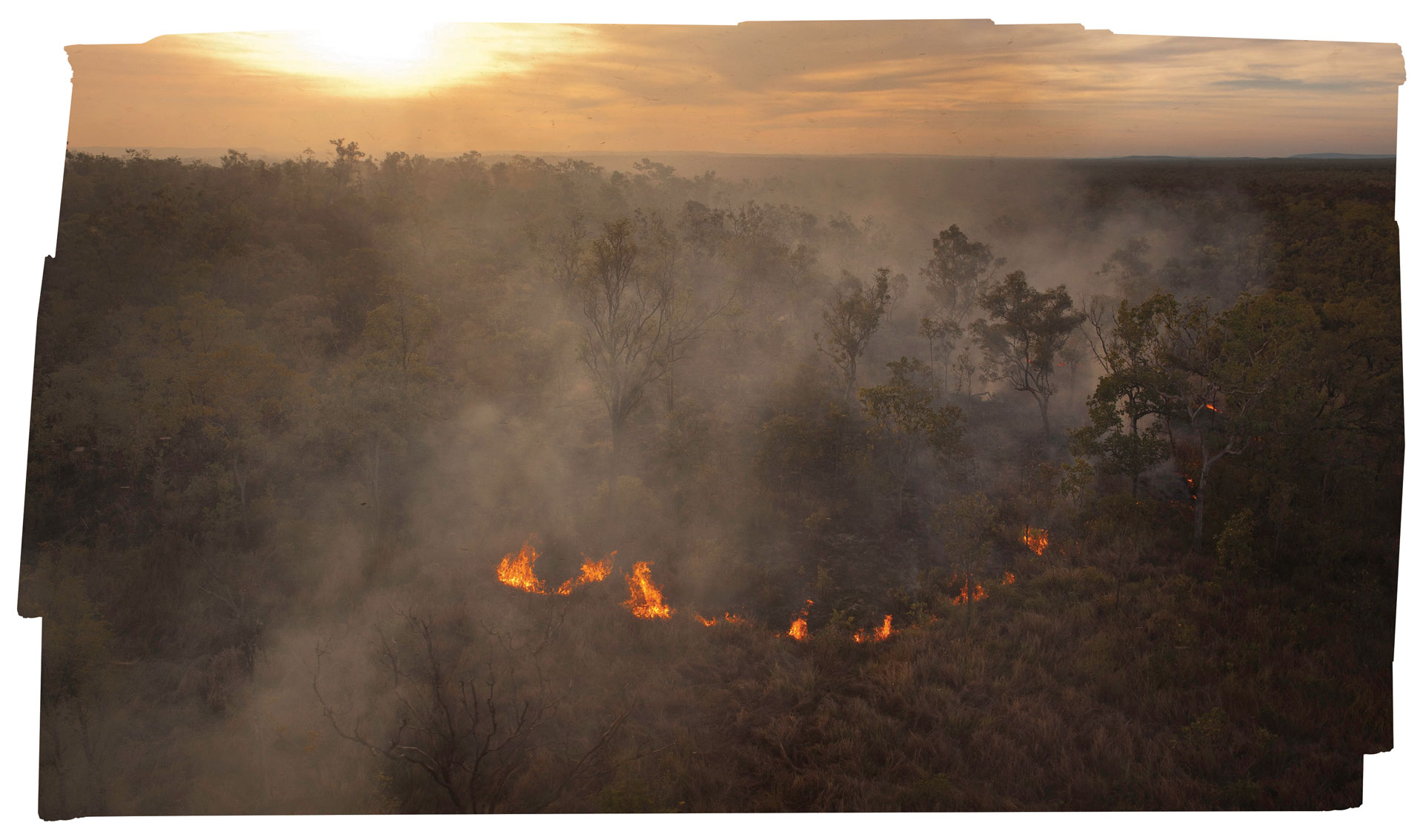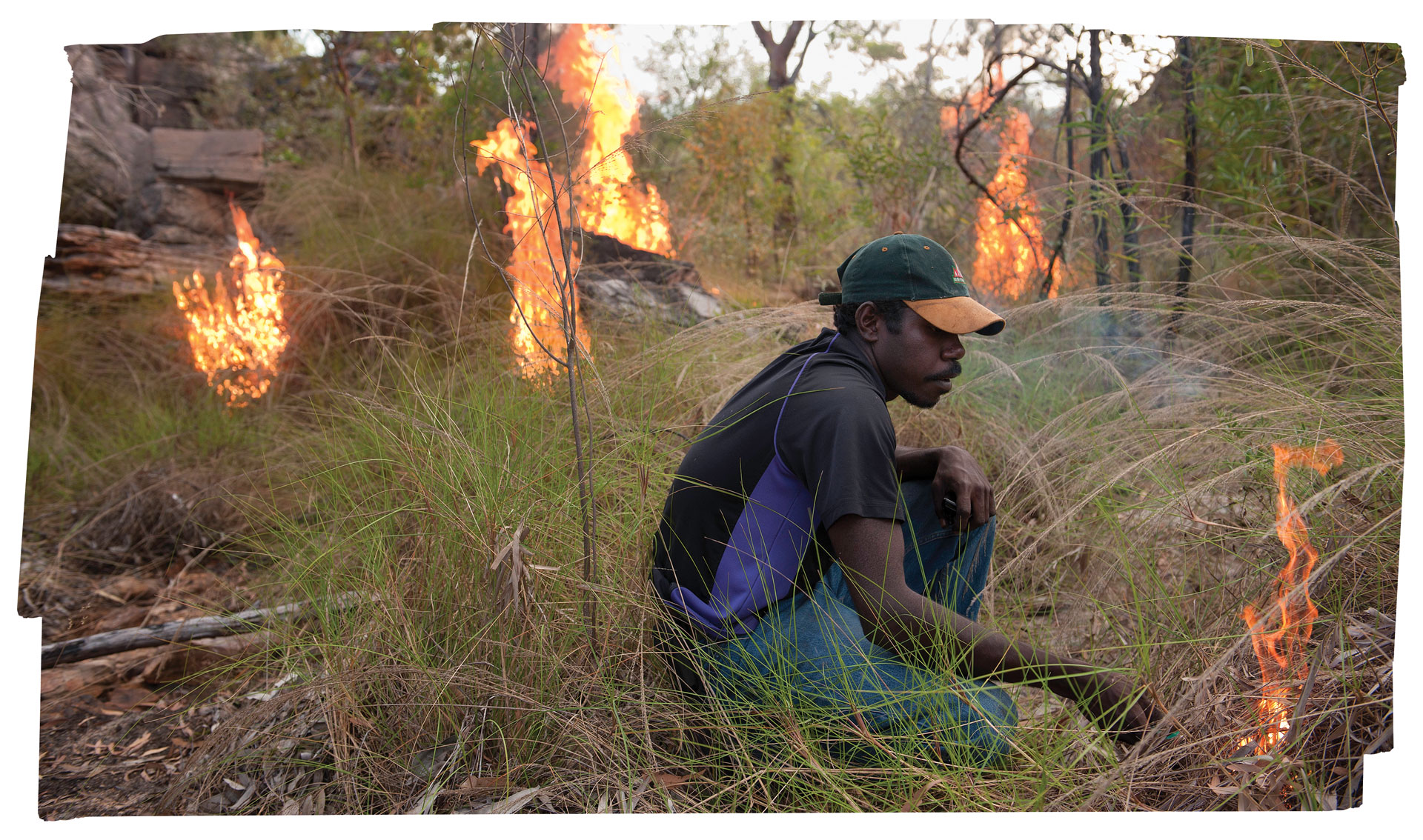Northern Australia—Sustainable Livelihoods Through Carbon Enterprises and Direct Employment in Conservation Management
Historically, much of Northern Australia existed as a complex mosaic of land and sea traditionally managed by hundreds of Indigenous clans. However, colonization left these clans dispossessed of their lands in the 19th and 20th centuries, interrupting their relationship, knowledge, and practice that underpinned patterns of environmental stewardship developed over more than 65,000 years. Without this traditional management, the savannas of Northern Australia have become subject to more wildfires late in the dry season, which burn more intensely, damage habitat for native plants and animals, and release higher levels of greenhouse gases. More recently, large areas of land have been returned to the management control of Indigenous Peoples. Native Title and other forms of Indigenous tenure and rights now cover more than 60 percent of the northern savannas. These underlying rights have served as an important foundation for partnership between TNC and Indigenous communities to secure financing and support the institutional and governance systems to sustain land- and sea-based enterprises. In fact, this case represents a compelling example of how sustainable livelihoods and conservation finance can work together to create positive outcomes for communities and the natural environment.
TNC’s Northern Australia program works with Indigenous Australians as they manage their traditional lands and renew and strengthen their connection to Country. Indigenous partners engage in participatory planning for their territories, called Healthy Country Planning (adapted by Traditional Owners in Australia from Conservation Action Planning to better fit their context and priorities). This enables them to envision a future for their lands with economic opportunity that aligns with their cultural priorities. As a key part of land management, Indigenous Australians have revived traditional fire management practices, helping restore and maintain the area’s rich biodiversity and protect important cultural sites and environmental features. By reducing destructive late season wildfires, these practices on Indigenous lands have resulted in the avoided release of more than 8 million tons of carbon dioxide equivalent across more than 50 million acres (19.3 million hectares), with plans to expand the model across Northern Australia to include carbon sequestration.
Reducing greenhouse gas emissions enables the community to generate and sell carbon credits through Australia’s carbon market, which creates important opportunities for communities. Traditional fire management has generated more than AUD $100 million in carbon finance, which enables groups to leverage additional investments from the government, philanthropy, and other sources. Warddeken Land Management Ltd., a community-owned company, executes financing responsibilities and other services related to land management and community well-being. The company includes board members from each clan group and a knowledge-holder steering committee representing diverse knowledges.
The company uses this financing to support a mix of community organizations and sustainable livelihood opportunities, which is key to its durability and financial self-sufficiency. Initiatives include capacity-building, infrastructure, community programs, carbon abatement enterprises, and Indigenous ranger programs. Ranger programs employ and train local men and women in land management and habitat restoration, combining Indigenous Knowledge and Western science for lasting results. The skills, management capacity, and governance arrangements developed through rangers’ programs and carbon abatement enterprises also provide a foundation for developing additional sustainable livelihood opportunities. For example, some local community members undertake fee-for-service activities, such as weed control, feral animal control, biosecurity protection, and wildlife surveys for neighboring landowners, government agencies, and the resources industry. Others develop ecotourism, cultural tourism opportunities, and bush food enterprises. This provides an important foundation for future sustainable livelihood opportunities based on culturally appropriate management of land resources.
Additional case studies on Sustainable Livelihood Opportunities can be accessed here.





